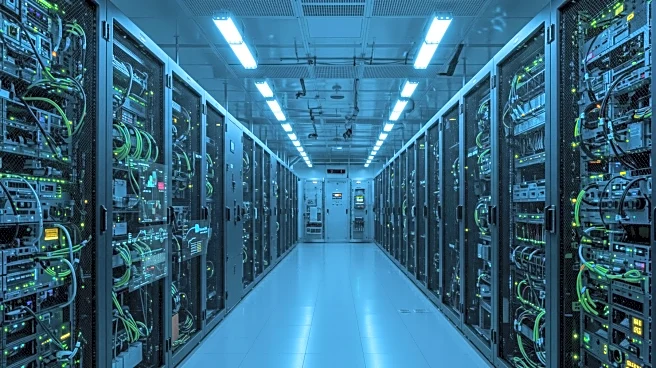What's Happening?
Data center operators in the United States are increasingly taking control of their own electric distribution systems to ensure power reliability and sustainability. This shift is driven by the growing demand for data services and the need for consistent power supply. By managing their own grids, data centers can optimize electricity flow, reduce dependency on public infrastructure, and enhance their competitive advantage. This approach allows for faster deployment of facilities and improved resilience against grid failures.
Why It's Important?
The move towards self-managed electric grids by data centers is a significant development in the energy and technology sectors. It addresses the challenges posed by the increasing energy demands of data centers, which are among the fastest-growing electricity users globally. By investing in private distribution systems, data centers can ensure uninterrupted service, which is critical for the digital economy. This trend also highlights the need for innovation in energy infrastructure to support the rapid growth of digital services and artificial intelligence.
What's Next?
As more data centers adopt self-managed grids, there may be increased collaboration with regulators to establish clear frameworks for permitting and interconnection. This could lead to policy changes that support private distribution innovation and provide incentives for grid modernization. Additionally, the success of this approach may encourage other industries to explore similar strategies for managing their energy needs, potentially leading to broader changes in how electricity is distributed and consumed.

